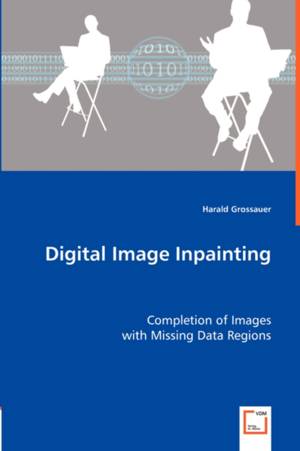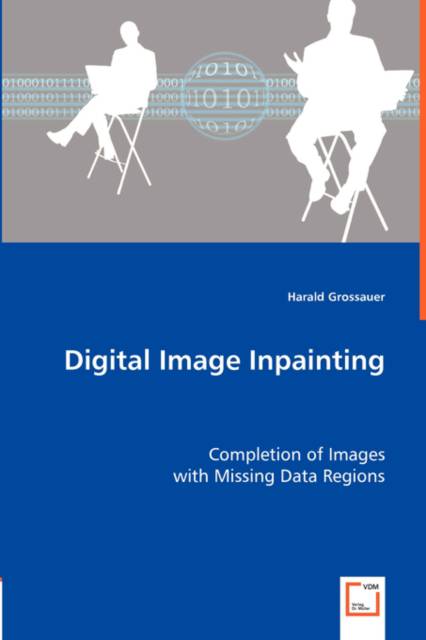
- Afhalen na 1 uur in een winkel met voorraad
- Gratis thuislevering in België vanaf € 30
- Ruim aanbod met 7 miljoen producten
- Afhalen na 1 uur in een winkel met voorraad
- Gratis thuislevering in België vanaf € 30
- Ruim aanbod met 7 miljoen producten
Zoeken
Digital Image Inpainting
Completion of Images with Missing Data Regions
Harald Grossauer
Paperback | Engels
€ 71,95
+ 143 punten
Omschrijving
The increase in computing power and available disk storage space over the last few decades has created new possibilities for image and movie archiving. Old photographs, which are threatened by bleaching, can be preserved digitally. Old celluloid movies, taking more and more damage every time they are exhibited, can be digitized and preserved. Unfortunately, much of the available material has already suffered. Typical damages are scratches or stains in photographs, peeled of coatings, or dust particles burned into celluloid movies. All these flaws create regions where the original image information is lost. Manual restoration of images or single movie frames is possible but time consuming. Therefore it is desirable to automate this process. Several so-called inpainting algorithms have been developed to achieve this goal.This book gives an overview on recent developments in inpainting and presents one algorithm in detail. It is written for Computer Scientists and Mathematicians with interest in Image Processing.
Specificaties
Betrokkenen
- Auteur(s):
- Uitgeverij:
Inhoud
- Aantal bladzijden:
- 104
- Taal:
- Engels
Eigenschappen
- Productcode (EAN):
- 9783836488815
- Verschijningsdatum:
- 2/04/2008
- Uitvoering:
- Paperback
- Formaat:
- Trade paperback (VS)
- Afmetingen:
- 152 mm x 229 mm
- Gewicht:
- 149 g

Alleen bij Standaard Boekhandel
+ 143 punten op je klantenkaart van Standaard Boekhandel
Beoordelingen
We publiceren alleen reviews die voldoen aan de voorwaarden voor reviews. Bekijk onze voorwaarden voor reviews.











